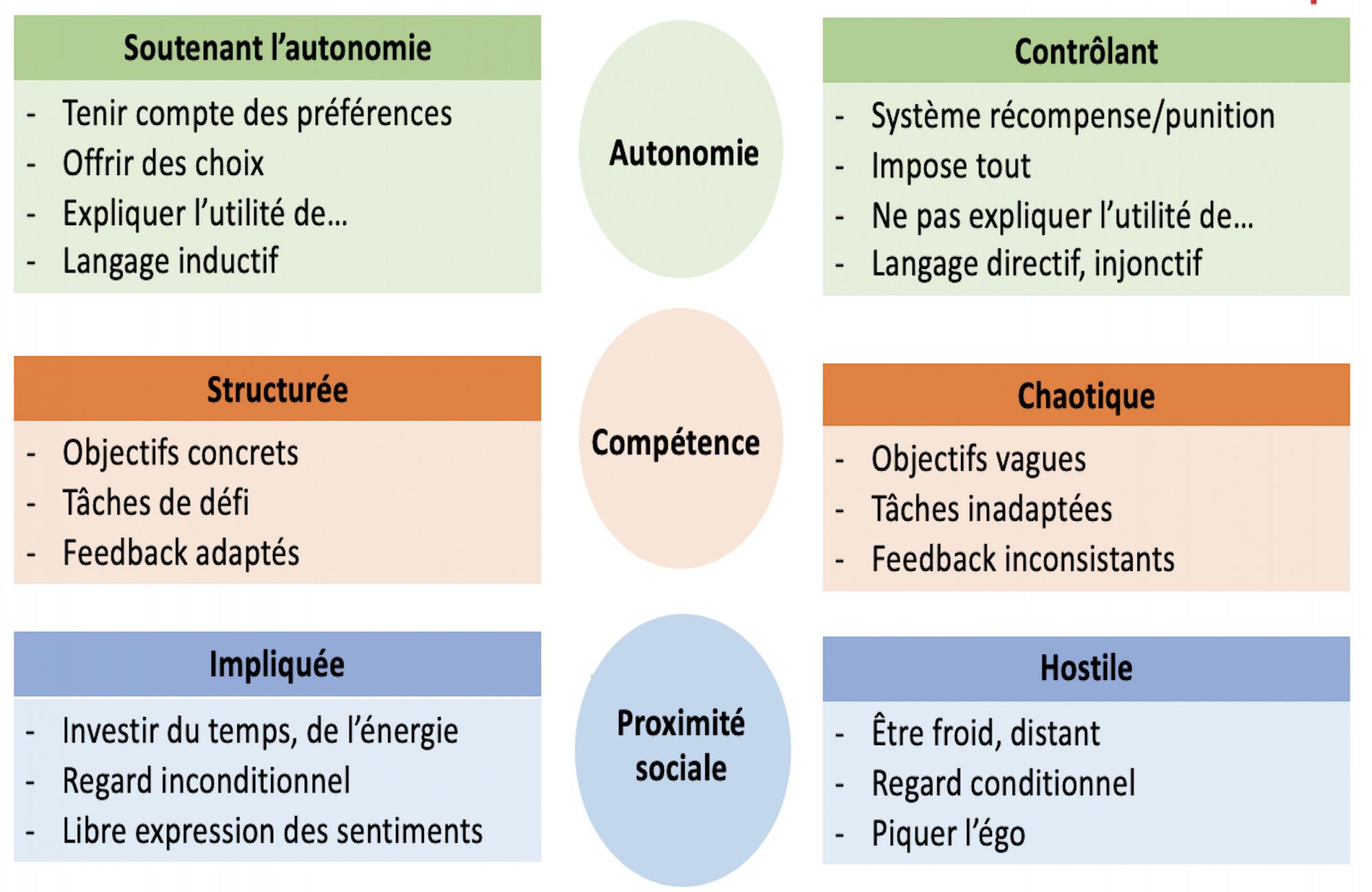- Share
- Share on Facebook
- Share on X
- Share on LinkedIn

According to the Self-Determination Theory (Ryan & Deci, 2017), the quality of student motivation in the classroom depends in part on the social environment, in which the teacher plays a key role. Student motivation is a shared responsibility between teacher and student. Depending on the motivational style that the teacher adopts, he or she has the opportunity to enhance or, on the contrary, to diminish the motivation of the students. When the motivational style supports the satisfaction of basic psychological needs (i.e., autonomy, competence, and relatedness), students tend to adopt an autonomous motivation for learning (e.g., engagement, perseverance, positive emotions), but when, on the contrary, the motivational style threatens the satisfaction of these needs, the students show a constrained motivation (e.g., anxiety, early dropout, off-task behavior).
Conceptual tool: components of motivational style
According to the theory of self-determination, the motivational style is characterized by 6 dimensions that participate in supporting or, on the contrary, threatening the satisfaction of psychological needs:
- autonomy support versus control
- structure versus chaos
- involvement versus hostility
Practical tool: the case study
Guideline:
Several frequent teaching situations are presented to you. For each situation, 4 or 5 ways of acting are proposed.
In front of each of these proposals, you must indicate if it is relevant to you:
- autonomy support
- control
- structure
- chaos
Practical tool: analyzing one's motivational style
Using an observation grid based on the theory of self-determination, each teacher analyzes the motivational style of different teachers and then his or her own (based on a video recording made before the training).
- Share
- Share on Facebook
- Share on X
- Share on LinkedIn

